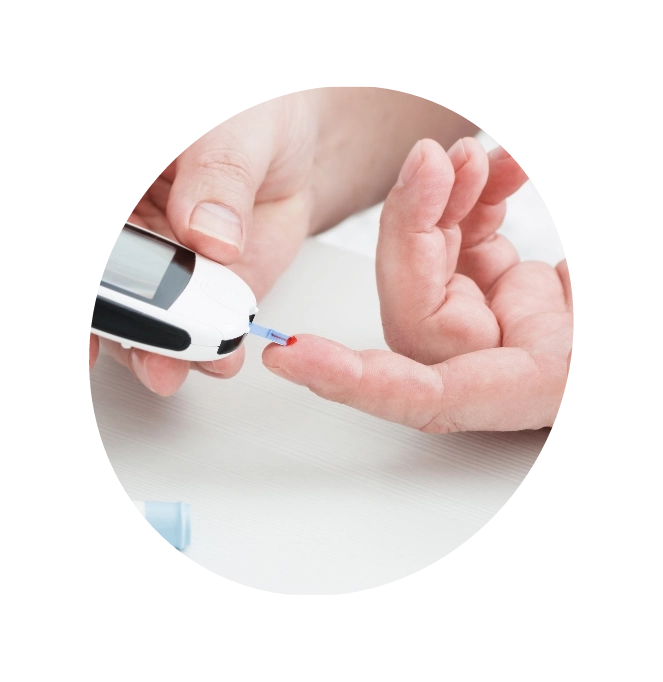When diet, exercise and maintaining a healthy weight aren’t enough, you may need the help of medication. Medications used to treat diabetes include insulin. Everyone with type 1 diabetes and some people with type 2 diabetes must take insulin every day to replace what their pancreas is unable to produce. Unfortunately, insulin can’t be taken in pill form because enzymes in your stomach break it down so that it becomes ineffective. For that reason, many people inject themselves with insulin using a syringe or an insulin pen injector a device that looks like a pen, except the cartridge is filled with insulin. Others may use an insulin pump, which provides a continuous supply of insulin, eliminating the need for daily shots.
An insulin pump is a pumping device about the size of a deck of cards. You wear it outside your body. A small tube connects the reservoir of insulin to a catheter that’s inserted under the skin of your abdomen. The pump dispenses the desired amount of insulin into your body and can be adjusted to infuse more or less insulin depending on meals, activity and glucose level. Insulin pumps aren’t for everyone. But for some people they provide improved blood sugar control and a more flexible lifestyle.
The most widely used form of insulin is synthetic human insulin, which is chemically identical to human insulin but manufactured in a laboratory.
Unfortunately, synthetic human insulin isn’t perfect. One of its chief failings is that it doesn’t mimic the way natural insulin is secreted. But newer types of insulin, known as insulin analogs, more closely resemble the way natural insulin acts in your body. Among these are lispro (Humalog), insulin aspart (NovoLog) and glargine (Lantus).
A number of drug options exist for treating type 2 diabetes, including:
Sulfonylurea drugs
These medications stimulate your pancreas to produce and release more insulin. For them to be effective, your pancreas must produce some insulin on its own. Second-generation sulfonylureas such as glipizide (Glucotrol, Glucotrol XL), glyburide (
DiaBeta, Glynase PresTab, Micronase) and glimepiride (Amaryl) are prescribed most often. The most common side effect of sulfonylureas is low blood sugar, especially during the first four months of therapy. You’re at much greater risk of low blood sugar if you have impaired liver or kidney function.
Meglitinides
These medications, such as repaglinide (Prandin), have effects similar to sulfonylureas, but you’re not as likely to develop low blood sugar. Meglitinides work quickly, and the results fade rapidly.
Biguanides
Metformin (Glucophage, Glucophage XR) is the only drug in this class available in the United States. It works by inhibiting the production and release of glucose from your liver, which means you need less insulin to transport blood sugar into your cells. One advantage of metformin is that is tends to cause less weight gain than do other diabetes medications. Possible side effects include a metallic taste in your mouth, loss of appetite, nausea or vomiting, abdominal bloating, or pain, gas and diarrhea. These effects usually decrease over time and are less likely to occur if you take the medication with food. A rare but serious side effect is lactic acidosis, which results when lactic acid builds up in your body.
Symptoms include tiredness, weakness, muscle aches, dizziness and drowsiness. Lactic acidosis is especially likely to occur if you mix this medication with alcohol or have impaired kidney function.
Alpha-glucosidase inhibitors
These drugs block the action of enzymes in your digestive tract that break down carbohydrates. That means sugar is absorbed into your bloodstream more slowly, which helps prevent the rapid rise in blood sugar that usually occurs right after a meal. Drugs in this class include acarbose (Precose) and miglitol (Glyset). Although safe and effective, alpha-glucosidase inhibitors can cause abdominal bloating, gas and diarrhea. If taken in high doses, they may also cause reversible liver damage.
Thiazolidinediones
These drugs make your body tissues more sensitive to insulin and keep your liver from overproducing glucose. Side effects of thiazolidinediones, such as rosiglitazone (Avandia) and pioglitazone hydrochloride (Actos), include swelling, weight gain and fatigue. A far more serious potential side effect is liver damage. The thiazolidinedione troglitzeone (Rezulin) was taken off the market in March 2000 because it caused liver failure. If your doctor prescribes these drugs, it’s important to have your liver checked every two months during the first year of therapy. Contact your doctor immediately if you experience any of the signs and symptoms of liver damage, such as nausea and vomiting, abdominal pain, loss of appetite, dark urine, or yellowing of your skin and the whites of your eyes (jaundice). These may not always be related to diabetes medications, but your doctor will need to investigate all possible causes.
Drug combinations
By combining drugs from different classes, you may be able to control your blood sugar in several different ways. Each class of oral medication can be combined with drugs from any other class. Most doctors prescribe two drugs in combination, although sometimes three drugs may be prescribed. Newer medications, such as Glucovance, which contains both glyburide and metformin, combine different oral drugs in a single tablet.

